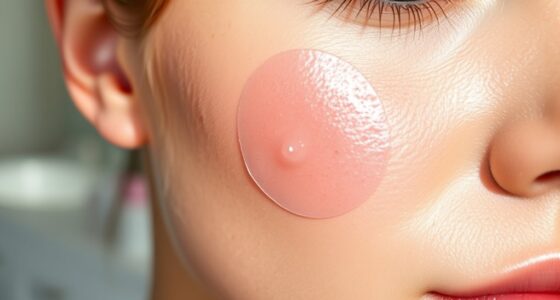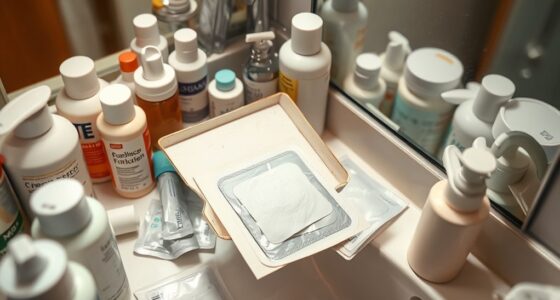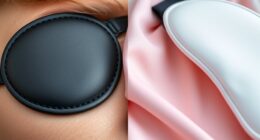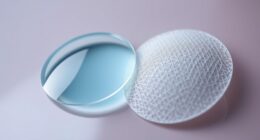Pimple patches can effectively combat cystic acne by absorbing fluid, reducing inflammation, and promoting healing. Ingredients like salicylic acid target cystic acne specifically. These patches create a protective barrier, prevent scarring, and discourage picking, aiding in the healing process. Essential application is vital – clean and dry the area, apply directly, and adhere for the recommended time. Although limited on deep acne, they can flatten cysts and prevent irritation. Consider alternatives for severe cases like oral medications. Select patches wisely based on material and size. User-friendly tips include starting with clean, dry skin and opting for hydrocolloid patches. Improve treatment outcomes with proper patch selection.
Key Takeaways
- Pimple patches work for cystic acne by absorbing fluid and reducing inflammation.
- Active ingredients like salicylic acid target cystic acne effectively.
- Hydrocolloid patches create a protective barrier and promote healing.
- Consistent use aids in flattening cystic acne and preventing further irritation.
- Pimple patches may have limited effectiveness on deep cystic acne and uneven surfaces.
How Pimple Patches Combat Cystic Acne
Pimple patches combat cystic acne by actively absorbing excess fluid and promoting the healing process. These patches act as a barrier, preventing further irritation and infection while reducing inflammation and the size of cystic acne lesions. By absorbing the excess fluid present in cystic acne, the patches help in flattening the blemish and aiding the skin's natural healing mechanisms. Some patches also include active ingredients like salicylic acid, which specifically target cystic acne by unclogging pores and reducing inflammation.
The active ingredients in these patches work in tandem with the patch's design to deliver targeted treatment to the affected area. Consistent use of pimple patches can notably improve the appearance and healing process of cystic acne. By adhering to the skin and creating a conducive environment for healing, these patches are a convenient and effective tool in managing cystic acne.
Understanding Hydrocolloid Patch Benefits
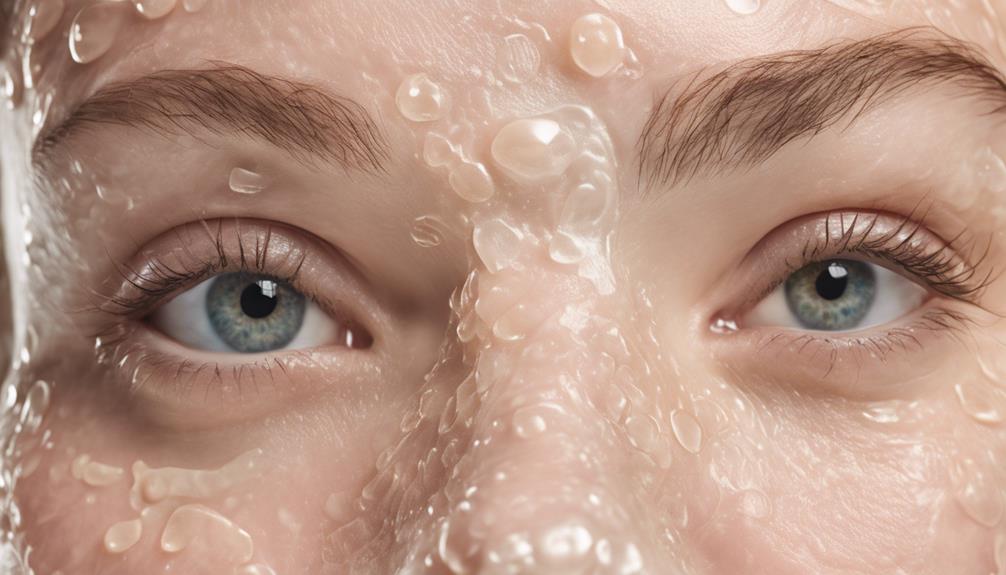
Hydrocolloid patches offer significant benefits for managing cystic acne by effectively absorbing pus and promoting accelerated healing. These patches work by creating a protective barrier over the pimple, preventing further irritation while reducing inflammation and swelling.
By absorbing the pus within the cystic acne, hydrocolloid patches help to flatten the pimple and prevent scarring. Not only do these patches aid in faster healing, but they also discourage picking and touching, which can further aggravate the skin.
The ability of hydrocolloid patches to draw out impurities from deep within the skin makes them a popular choice for those dealing with cystic acne. Their effectiveness in addressing the core issues of cystic acne sets them apart as a valuable tool in the management of this challenging skin condition.
Proper Application Techniques for Pimple Patches
For optimal effectiveness, it is essential to thoroughly clean and dry the affected area before applying the patch for cystic acne treatment. Ensuring proper application techniques can enhance the benefits of using pimple patches, such as hydrocolloid patches, for targeting inflammation and promoting faster healing of blemishes. Follow the manufacturer's instructions for wear time and avoid touching or moving the patch once it's applied to allow for uninterrupted healing of the cystic acne.
| Proper Application Techniques for Pimple Patches |
|---|
| 1. Clean the Area |
| 2. Dry Thoroughly |
| 3. Apply Directly |
| 4. Follow Wear Time |
| 5. Avoid Touching |
Exploring the Efficacy of Pimple Patches

When considering the effectiveness of pimple patches for cystic acne, it's important to examine factors like patch application technique and the duration of their effectiveness.
Understanding the proper way to apply these patches and how long they can effectively reduce inflammation and promote healing is vital in evaluating their overall impact.
Patch Application Technique
Properly applying pimple patches over cystic acne can aid in reducing inflammation, promoting faster healing, and preventing unnecessary picking at the affected area.
When it comes to patch application technique, here are some key points to keep in mind:
- Gently cleanse the skin: Before applying the patch, make sure the skin is clean and dry to maximize adhesion.
- Place the patch centrally: Position the patch over the cystic acne, ensuring it covers the entire affected area.
- Avoid touching the adhesive: To prevent contamination, handle the patch by the edges when applying it to the skin.
- Leave the patch undisturbed: Allow the patch to work its magic undisturbed for several hours or overnight for best results.
Duration of Effectiveness
After mastering the patch application technique, understanding the duration of effectiveness of pimple patches becomes essential in optimizing their efficacy for treating cystic acne. Most pimple patches are designed to be worn for 6-8 hours, allowing the active ingredients like salicylic acid and tea tree oil to work effectively. Here is a table summarizing how these ingredients can help prevent and treat cystic acne:
| Active Ingredient | Benefits |
|---|---|
| Salicylic Acid | Helps unclog pores and reduce inflammation. |
| Tea Tree Oil | Has antimicrobial properties to prevent acne. |
Consistent use of these patches can aid in flattening cystic acne and preventing further irritation, making them a convenient and non-invasive option for managing cystic acne.
Potential Risks and Limitations of Pimple Patches

In addressing the potential risks and limitations of pimple patches, it's essential to acknowledge their limited efficacy in treating deep cystic acne. When dealing with this severe form of acne, pimple patches may not be the most effective solution due to their inability to reach deep into the skin where cystic acne lesions develop.
Here are some key points to take into account:
- Limited Effectiveness: Pimple patches may not provide adequate treatment for cystic acne as they primarily target surface-level blemishes, lacking the penetration needed for deep acne.
- Adhesive Challenges: The adhesive on pimple patches may struggle to adhere well to the uneven and raised surfaces common in cystic acne, reducing their effectiveness.
- Need for Stronger Treatments: Cystic acne often requires more intensive treatments like oral medications or injections, surpassing the capabilities of pimple patches.
- Addressing Symptoms, Not Causes: While pimple patches can help reduce inflammation and promote healing for milder acne types, they may not address the underlying causes of cystic acne, necessitating more thorough treatment approaches.
Alternative Solutions for Cystic Acne

When exploring alternative solutions for cystic acne, it's essential to explore natural acne remedies, professional skincare treatments, and dietary adjustments.
These approaches can complement traditional treatments, offering a holistic approach to managing cystic acne.
Natural Acne Remedies
Natural acne remedies such as tea tree oil, aloe vera, and witch hazel offer soothing and inflammation-reducing benefits for individuals dealing with cystic acne. When exploring natural remedies for cystic acne, consider the following:
- Essential oils: Lavender, chamomile, and rosemary possess antibacterial properties that can aid in treating cystic acne.
- Dietary changes: Reducing sugar intake, increasing water consumption, and incorporating omega-3 fatty acids can improve symptoms of cystic acne.
- Herbal supplements: Zinc, evening primrose oil, and green tea extract have shown potential in managing cystic acne.
- Lifestyle modifications: Stress reduction, regular exercise, and proper sleep hygiene can complement natural remedies for managing cystic acne effectively.
These natural approaches can be beneficial in addressing cystic acne concerns.
Professional Skincare Treatments
Professional skincare treatments like cortisone injections offer rapid and effective solutions for shrinking cystic acne overnight. Dermatologists recommend cortisone injections for urgent situations, such as important events, to reduce the size and redness of severe cystic acne.
These injections work by decreasing inflammation and promoting healing in the targeted area, providing immediate relief. Administered by board-certified dermatologists, cortisone injections are a preferred option for quickly addressing severe cystic acne concerns.
While pimple patches have their benefits, professional treatments like cortisone injections are specifically tailored to target and treat severe cystic acne. If you're dealing with stubborn cystic acne, consulting a dermatologist for professional treatments like cortisone injections may provide the fast and effective results you're looking for.
Dietary Adjustments for Acne
Incorporating dietary adjustments can be an effective alternative solution for managing cystic acne, offering potential benefits for skin health and acne inflammation.
- Consuming foods rich in omega-3 fatty acids, like salmon and chia seeds, can help reduce inflammation associated with cystic acne.
- Avoiding high-glycemic foods such as sugary snacks and processed items can prevent hormonal fluctuations that trigger cystic acne breakouts.
- Including probiotic-rich foods like yogurt and kefir in your diet can aid in balancing gut bacteria, potentially improving cystic acne symptoms.
- Eating a variety of vitamin-rich foods such as fruits and vegetables provides essential nutrients for skin health, which may contribute to better cystic acne management.
Evaluating Different Types of Acne Patches

When evaluating different types of acne patches, considering their specific active ingredients is essential for determining their effectiveness in treating cystic acne.
For instance, patches containing salicylic acid can be beneficial for targeting acne at its source by unclogging pores and reducing inflammation.
Hydrocolloid pimple patches, like the COSRX Acne Pimple Master Patch, are effective in absorbing pus and promoting healing for cystic acne lesions. These non-medicated patches create a protective barrier that prevents further infection while maintaining a moist environment conducive to faster recovery.
On the other hand, microneedle patches are designed to penetrate deeper into the skin, delivering active ingredients directly to the affected area. Different acne patches offer a variety of active ingredients such as tea tree oil or other anti-inflammatory agents, each with its unique benefits for treating cystic acne.
Criteria for Selecting the Best Pimple Patches

When selecting the best pimple patches for cystic acne, take into account the material of the patch for maximum adherence.
Moreover, evaluate the size of the patch to guarantee it covers the affected area adequately.
These two factors play a significant role in the effectiveness of the patch treatment.
Patch Material Importance
For selecting the best pimple patches, the material is an essential factor that determines their effectiveness in treating cystic acne. When considering patch material, hydrocolloid stands out for its ability to absorb pus and promote healing in cystic acne.
Here are four key points to keep in mind:
- Absorption Capacity: Opt for patches with a thicker material to absorb larger amounts of fluid commonly found in cystic acne lesions.
- Moist Environment: Hydrocolloid patches create a moist environment that aids in reducing inflammation, making them ideal for cystic acne.
- Protection: The right material can shield the cystic acne lesion from external factors, preventing further irritation.
- Healing Promotion: Patches with suitable materials play a significant role in creating a conducive environment for the healing process.
Patch Size Consideration
Considering the significance of adequate coverage for effective treatment of cystic acne lesions, selecting pimple patches that match the size of the affected area is essential. Patches work by absorbing impurities from the skin, promoting faster healing.
Opting for a patch that adequately covers the entire cystic acne spot allows for maximum absorption of pus and other substances, aiding in the recovery process. Proper patch size consideration is vital in ensuring that the hydrocolloid patch can function at its best.
User-Friendly Tips for Pimple Patch Application

To guarantee successful application of pimple patches, we suggest starting with clean, dry skin. Here are some user-friendly tips for applying pimple patches effectively:
- Choose the Right Patch: Opt for a hydrocolloid patch that can absorb fluids and promote healing. Look for ingredients like salicylic acid or tea tree oil for added benefits.
- Cleanse Gently: Before applying the patch, cleanse the affected area gently with a mild cleanser to remove any dirt or oils. Pat dry thoroughly to make sure the patch adheres well.
- Avoid Moisturizers: Skip applying moisturizers or creams on the area where you plan to use the patch. Moisturizers can create a barrier that hinders the patch from adhering properly.
- Hands Off: Refrain from touching the patch once applied to prevent skin irritation and ensure it stays in place for best effectiveness.
Expert Insights on Pimple Patch Usage
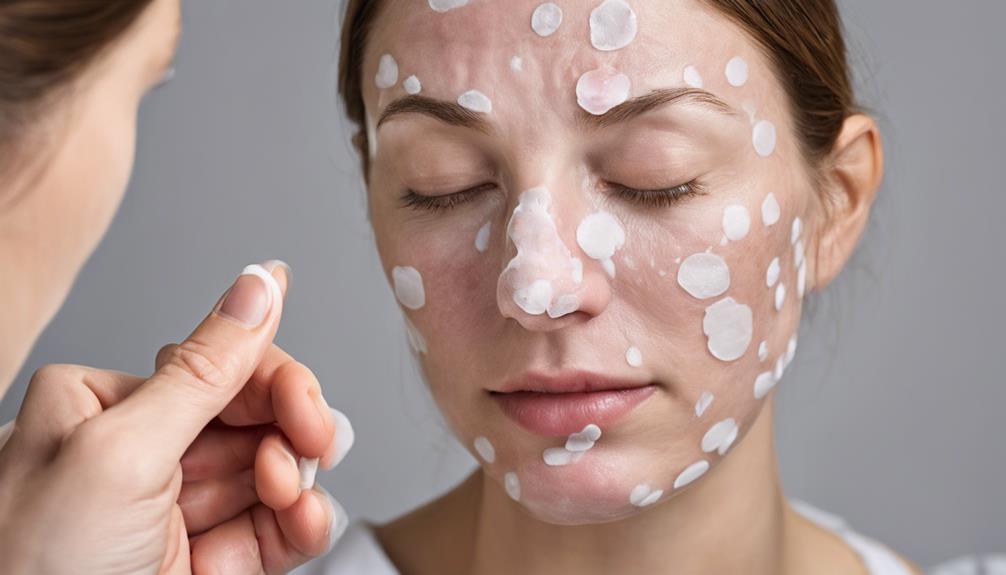
Our experience in dermatology reveals a significant enhancement in skin healing when utilizing pimple patches for various types of acne lesions. Pimple patches work best for open pimples that are draining or in the process of healing. They aid in faster skin recovery by absorbing any drainage from the pimples and creating a barrier to protect the wound.
These patches are particularly effective for individuals who may have picked at their skin, as they prevent further trauma and promote a clean healing environment. To maximize the benefits of pimple patches, it's essential to apply them to clean, dry skin for a few hours, especially before bedtime.
When used correctly, these patches can help reduce inflammation and the size of blemishes, leading to improved skin clarity and overall appearance. Remember, the key to successful pimple patch usage is to cleanse the spot thoroughly before application for the best results in skin healing.
Addressing Common Concerns About Pimple Patches
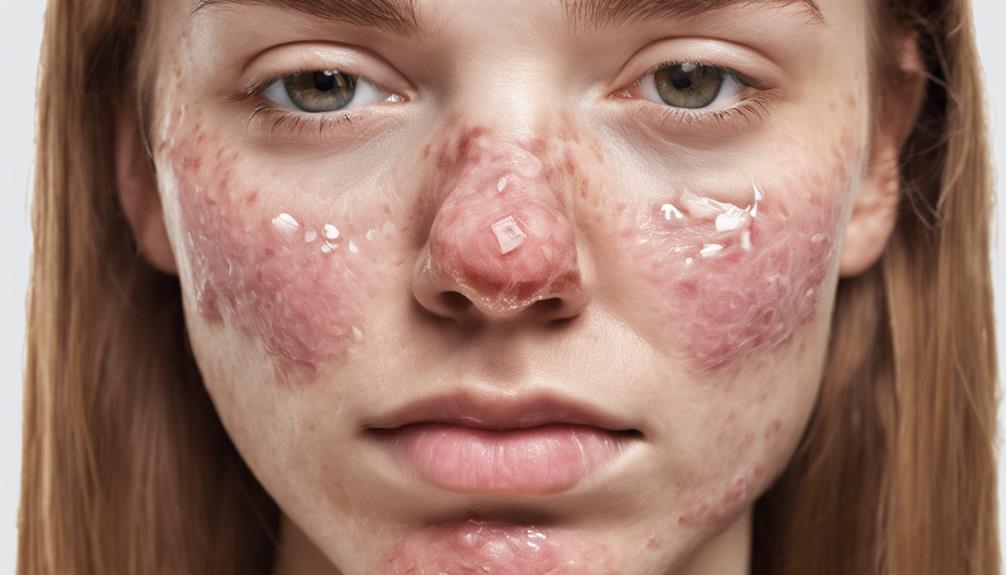
Many individuals wonder about the effectiveness of pimple patches for treating cystic acne. When considering using pimple patches for cystic acne, there are some common concerns to address:
- Important: Pimple patches containing ingredients like salicylic acid may struggle to penetrate deeply enough into the skin to effectively target cystic acne lesions.
- Size and Depth of Cystic Acne: Cystic acne lesions are typically larger and deeper, making it challenging for pimple patches to absorb the pus and reduce inflammation effectively.
- Best Suited for Open Pimples: Pimple patches work best on open, draining pimples, which aren't typically characteristics of cystic acne, leading to potential limited efficacy.
- Dermatologists' Advice: It's important to seek advice from dermatologists for appropriate treatment options for managing cystic acne. Dermatologists may recommend more intensive treatments like oral medications or injections instead of relying solely on pimple patches.
Dermatologist Recommendations for Acne Patch Use
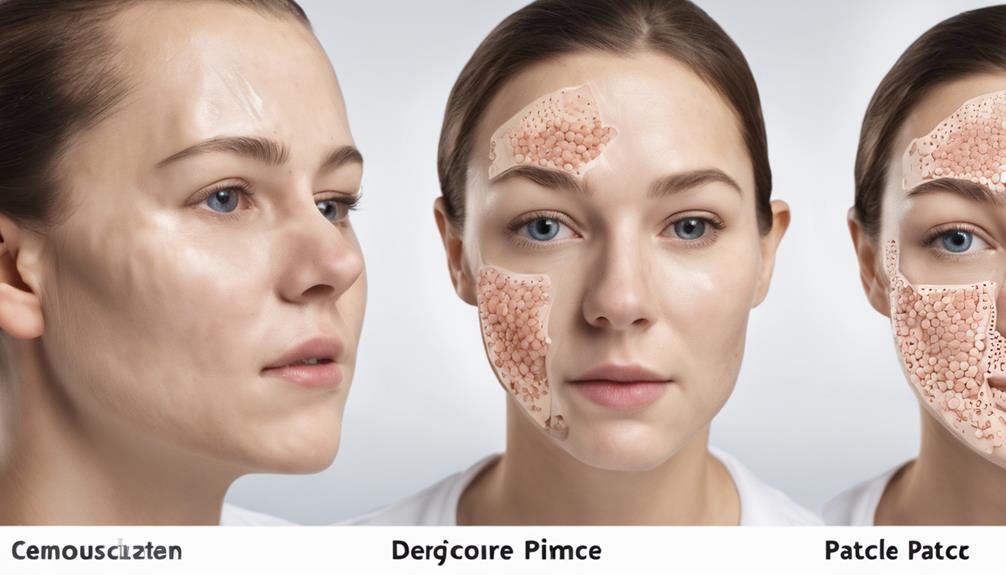
Discussing dermatologist recommendations for acne patch use, it's essential to understand the benefits and considerations when incorporating pimple patches into a cystic acne treatment regimen. Dermatologists suggest using pimple patches for cystic acne as they can aid in reducing inflammation, absorbing excess fluid, and protecting the skin from further irritation.
Specifically designed hydrocolloid patches can help flatten cystic acne lesions and prevent scarring, providing a thorough and convenient option for managing breakouts. Consistent application of pimple patches, especially overnight, can lead to improved healing and reduced swelling over time.
It's important to follow the instructions provided by dermatologists when using these patches to maximize their effectiveness in treating cystic acne. By incorporating pimple patches into a detailed skincare routine recommended by a dermatologist, individuals with cystic acne can potentially see improvements in their skin condition and overall confidence.
Frequently Asked Questions
Can I Put Pimple Patch Over Cystic Acne?
Yes, we can put a pimple patch over cystic acne. Patches help reduce inflammation, absorb excess fluid, and prevent infection.
Hydrocolloid patches are effective for cystic acne, promoting healing. Some with salicylic acid target cystic acne specifically, flattening bumps and reducing redness.
Pimple patches are recommended to prevent picking and aid faster healing. It's a simple and effective way to manage cystic acne.
How Do You Flatten Cystic Acne?
When addressing cystic acne, it's essential to employ methods that target inflammation and promote healing.
Effective approaches include using hydrocolloid patches to absorb excess fluid and reduce the size of the blemish. These patches work by forming a gel that helps flatten the cyst and prevent further skin damage.
Applying them for 6-8 hours can aid in absorbing pus and promoting recovery, leading to a smoother complexion.
How Do You Get Rid of Cystic Acne Fast?
When we seek to get rid of cystic acne quickly, we can turn to various methods such as topical treatments, lifestyle changes, and professional interventions.
These include using benzoyl peroxide, salicylic acid, or retinoids, maintaining a consistent skincare routine, avoiding triggers like dairy and stress, and consulting a dermatologist for prescription medications or procedures.
Combining these approaches can help address cystic acne effectively and expedite the healing process.
What Type of Acne Do Pimple Patches Work On?
Pimple patches work best on open, draining, healing pustules, papules, and cysts. They aid the healing process by absorbing drainage and covering the wound.
While effective for active bumps on the skin, they may not work as well on closed or deeper lesions, blackheads, or whiteheads.
These patches aren't preventative and have limited effectiveness on cystic acne or large breakouts.
Conclusion
To sum up, pimple patches can be effective in treating cystic acne by absorbing excess oil and reducing inflammation.
While they may not be a cure-all, they can provide relief and help speed up the healing process.
Remember, 'Rome wasn't built in a day,' so consistency and patience are key when using pimple patches to tackle stubborn cystic acne.
Consult with a dermatologist for personalized recommendations and guidance on incorporating pimple patches into your skincare routine.




